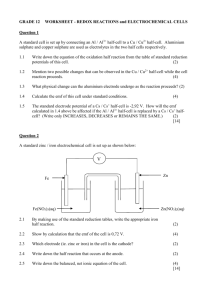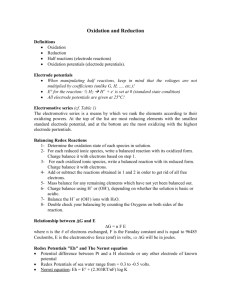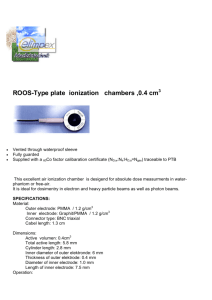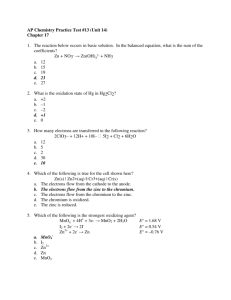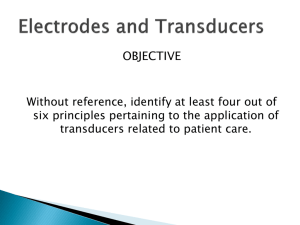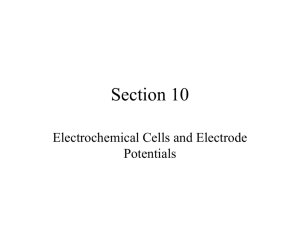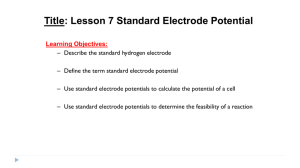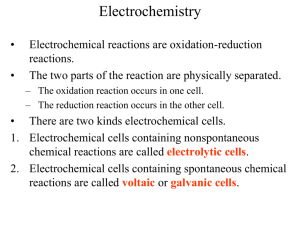Standard Electrode Potentials
advertisement
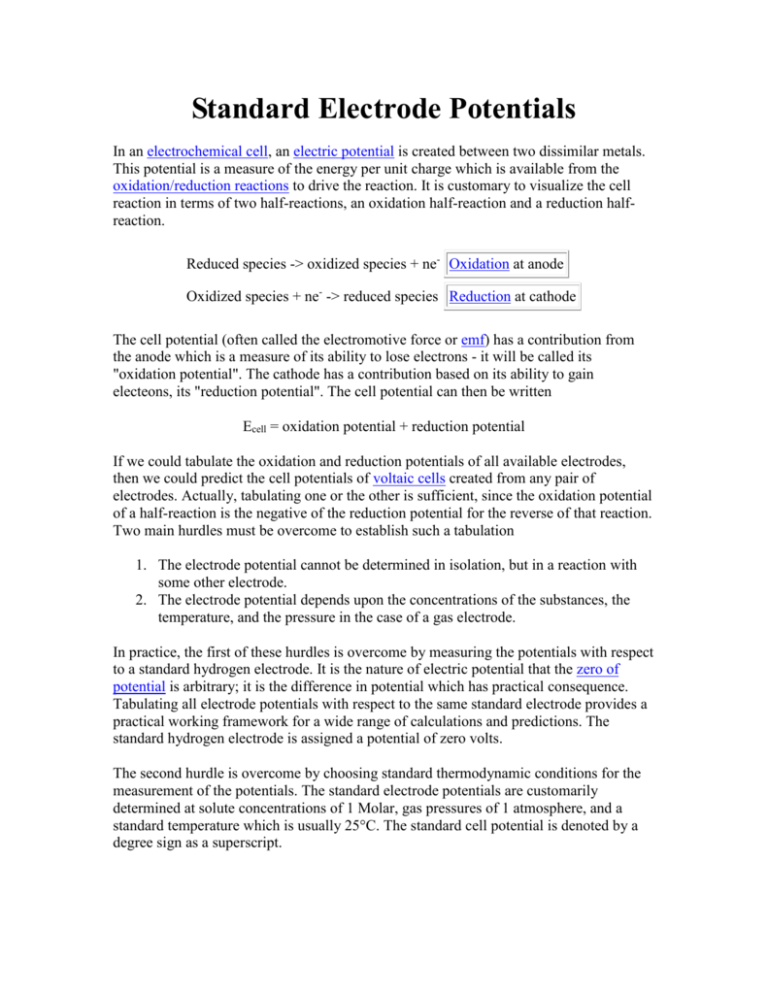
Standard Electrode Potentials In an electrochemical cell, an electric potential is created between two dissimilar metals. This potential is a measure of the energy per unit charge which is available from the oxidation/reduction reactions to drive the reaction. It is customary to visualize the cell reaction in terms of two half-reactions, an oxidation half-reaction and a reduction halfreaction. Reduced species -> oxidized species + ne- Oxidation at anode Oxidized species + ne- -> reduced species Reduction at cathode The cell potential (often called the electromotive force or emf) has a contribution from the anode which is a measure of its ability to lose electrons - it will be called its "oxidation potential". The cathode has a contribution based on its ability to gain electeons, its "reduction potential". The cell potential can then be written Ecell = oxidation potential + reduction potential If we could tabulate the oxidation and reduction potentials of all available electrodes, then we could predict the cell potentials of voltaic cells created from any pair of electrodes. Actually, tabulating one or the other is sufficient, since the oxidation potential of a half-reaction is the negative of the reduction potential for the reverse of that reaction. Two main hurdles must be overcome to establish such a tabulation 1. The electrode potential cannot be determined in isolation, but in a reaction with some other electrode. 2. The electrode potential depends upon the concentrations of the substances, the temperature, and the pressure in the case of a gas electrode. In practice, the first of these hurdles is overcome by measuring the potentials with respect to a standard hydrogen electrode. It is the nature of electric potential that the zero of potential is arbitrary; it is the difference in potential which has practical consequence. Tabulating all electrode potentials with respect to the same standard electrode provides a practical working framework for a wide range of calculations and predictions. The standard hydrogen electrode is assigned a potential of zero volts. The second hurdle is overcome by choosing standard thermodynamic conditions for the measurement of the potentials. The standard electrode potentials are customarily determined at solute concentrations of 1 Molar, gas pressures of 1 atmosphere, and a standard temperature which is usually 25°C. The standard cell potential is denoted by a degree sign as a superscript. E°Cell 1. 2. 3. 4. Measured against standard hydroden electrode. Concentration 1 Molar Pressure 1 atmosphere Temperature 25°C The example below shows some of the extreme values for standard cell potentials. Cathode (Reduction) Half-Reaction Standard Potential E° (volts) Li+(aq) + e- -> Li(s) -3.04 + - K (aq) + e -> K(s) 2+ - Ca (aq) + 2e -> Ca(s) + -2.92 -2.76 - Na (aq) + e -> Na(s) -2.71 Zn2+(aq) + 2e- -> Zn(s) -0.76 Cu2+(aq) + 2e- -> Cu(s) 0.34 O3(g) + 2H+(aq) + 2e- -> O2(g) + H2O(l) 2.07 F2(g) + 2e- -> 2F-(aq) 2.87 The values for the table entries are reduction potentials, so lithium at the top of the list has the most negative number, indicating that it is the strongest reducing agent. The strongest oxidizing agent is fluorine with the largest positive number for standard electrode potential. The link below takes you to a more extensive table. Table of Standard Electrode Potentials



